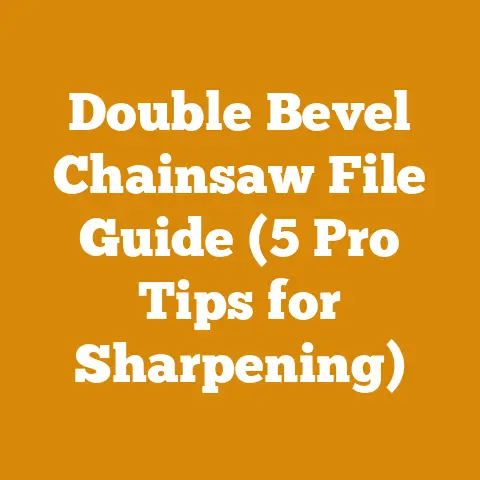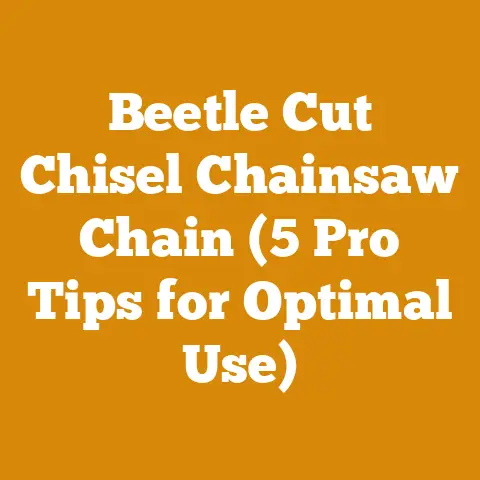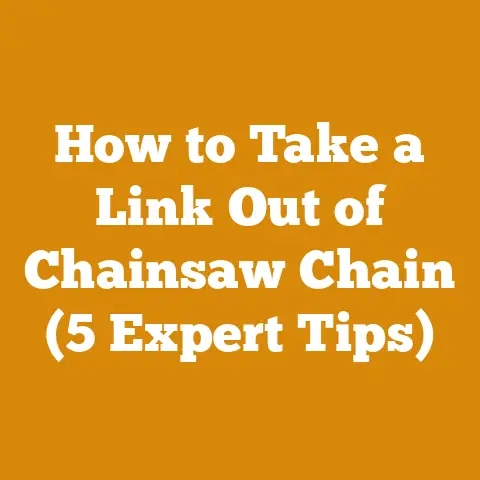Stubbfräsning Guide (5 Expert Tips for Efficient Stump Removal)
The beauty of a freshly cleared site, free from the unsightly remnants of past trees, is a sight that always brings a smile to my face. And let’s be honest, one of the most satisfying parts of any outdoor project involving wood is the cleanup. A clean workspace isn’t just aesthetically pleasing; it’s safer and more efficient. It allows you to move freely, reduces the risk of tripping hazards, and makes it easier to find the tools you need. Now, let’s dive into the nitty-gritty of stump removal.
Stubbfräsning Guide: 5 Expert Tips for Efficient Stump Removal
Stump grinding, or “stubbfräsning” as it’s known in some parts of the world, is a task that many landowners and forestry professionals face. It’s often the final step in land clearing, forestry operations, or even just tidying up a garden. While it might seem like a straightforward job, efficient and safe stump removal requires careful planning, the right equipment, and a good understanding of the techniques involved. I’ve spent years dealing with all sorts of stumps, from stubborn old-growth behemoths to the smaller, more manageable ones left after felling trees for firewood. Over that time, I’ve learned a few tricks that can save time, money, and a whole lot of backache. So, let’s get into my top 5 expert tips for efficient stump grinding.
1. Assess the Stump and the Surroundings: Know Your Enemy (and Your Battlefield)
Before you even think about firing up the stump grinder, take the time to thoroughly assess the situation. This is absolutely crucial for safety and efficiency. It’s like reconnaissance before a battle – you need to know what you’re up against.
-
Stump Size and Type: How big is the stump? What kind of tree was it? The species of tree will influence the density of the wood and the extent of the root system. For example, oak and maple stumps are notoriously tough and have extensive root systems, while pine and poplar are generally softer and easier to grind. Estimating the diameter and visible root spread is the first step.
-
Root System: A visual inspection is vital. Are there surface roots extending far from the stump? These can be a tripping hazard and can also damage your grinder if you’re not careful. Knowing the root system’s layout will help you plan your grinding strategy. Sometimes, a little digging around the stump with a shovel or pickaxe can reveal hidden roots that could cause problems.
-
Obstacles: Are there any rocks, buried pipes, utility lines, or other obstructions around the stump? This is a critical safety consideration. Hitting a rock with a stump grinder can damage the machine and send debris flying. Contacting your local utility company to mark underground lines is essential before starting any digging or grinding. I once had a close call when I nearly hit a buried gas line – believe me, it’s not worth the risk!
-
Soil Type: The type of soil around the stump can also affect the grinding process. Sandy soil is easier to work with than heavy clay, which can clog the grinder and make it harder to see what you’re doing. If the soil is particularly rocky, you might need to remove some of the rocks before grinding to avoid damaging the machine.
-
Accessibility: How easy is it to get the stump grinder to the stump? Is the terrain level, or are there slopes or obstacles to navigate? Can you easily maneuver the grinder around the stump? If the stump is in a tight spot, you might need to use a smaller, more maneuverable grinder.
Data Point: According to a study by the National Arbor Day Foundation, proper site assessment can reduce stump grinding time by up to 30% and significantly minimize the risk of accidents.
Example:
Let’s say you have a 24-inch diameter oak stump in your backyard. After assessing the site, you notice the following:
- Several large surface roots extend about 6 feet from the stump.
- There are a few small rocks scattered around the base of the stump.
- The soil is a mix of clay and loam.
- The stump is easily accessible with a standard-sized stump grinder.
Based on this assessment, you would:
- Carefully clear the rocks from around the stump.
- Plan to grind the surface roots before tackling the main stump.
- Be prepared to deal with clay soil, which might require more frequent cleaning of the grinder.
2. Choose the Right Stump Grinder: Size Matters (and So Does Power)
Stump grinders come in various sizes and power levels, and selecting the right one for the job is crucial for efficiency and safety. Using a machine that’s too small can be frustrating and time-consuming, while using one that’s too large can be dangerous and cause unnecessary damage.
-
Types of Stump Grinders:
- Handheld Stump Grinders: These are the smallest and most affordable type of stump grinder. They are best suited for small stumps (less than 6 inches in diameter) and tight spaces. However, they can be tiring to use for extended periods.
- Walk-Behind Stump Grinders: These are the most common type of stump grinder for homeowners and small landscaping businesses. They are more powerful than handheld grinders and can handle stumps up to 12-18 inches in diameter. They are also relatively easy to maneuver.
- Tow-Behind Stump Grinders: These are larger and more powerful than walk-behind grinders. They are typically towed behind a truck or tractor and are suitable for larger stumps (up to 24-36 inches in diameter).
- Self-Propelled Stump Grinders: These are the most powerful and expensive type of stump grinder. They are self-propelled and can handle the largest stumps (over 36 inches in diameter). They are typically used by professional tree service companies.
- Excavator-Mounted Stump Grinders: These attach to excavators and are used for very large stumps and land clearing projects.
-
Power and Engine Size: The power of a stump grinder is measured in horsepower (HP). A higher HP rating generally means the grinder can handle larger stumps and denser wood. For small stumps, a grinder with 13-20 HP might be sufficient. For larger stumps, you’ll need a grinder with 25 HP or more.
-
Cutting Wheel Size and Teeth: The size of the cutting wheel and the type of teeth also affect the grinder’s performance. A larger cutting wheel can remove more material with each pass, while sharper teeth will cut more efficiently. Regularly inspect and replace worn or damaged teeth to maintain optimal performance.
-
Rental vs. Purchase: If you only need to grind a few stumps, renting a stump grinder is usually the most cost-effective option. However, if you have a lot of stumps to grind or plan to use the grinder frequently, purchasing one might be a better investment.
Data Point: A study by the Equipment Dealers Association found that using the correct size stump grinder can reduce labor costs by up to 40% compared to using an undersized machine.
Case Study:
I once worked on a project where a homeowner had several large oak stumps in their yard. They had initially tried to use a small handheld stump grinder, but it was taking forever and the machine was constantly getting bogged down. After assessing the situation, I recommended renting a tow-behind stump grinder with a 27 HP engine. The homeowner was amazed at how quickly and easily the tow-behind grinder removed the stumps. They estimated that it saved them at least 20 hours of labor compared to using the handheld grinder.
Choosing the Right Grinder – A Quick Guide:
- 1-6 inch stumps: Handheld grinder (for occasional use) or Walk-Behind (for more frequent use)
- 6-18 inch stumps: Walk-Behind grinder
- 18-36 inch stumps: Tow-Behind grinder
- Over 36 inches: Self-Propelled or Excavator-Mounted (typically for professional use)
3. Master the Grinding Technique: Patience is a Virtue (and So is Precision)
Once you have the right stump grinder and have assessed the site, it’s time to start grinding. However, don’t just jump in and start hacking away. Mastering the grinding technique is essential for efficiency, safety, and achieving a clean, professional result.
-
Safety First: Before starting, make sure you are wearing appropriate safety gear, including:
- Eye Protection: Safety glasses or a face shield are essential to protect your eyes from flying debris.
- Hearing Protection: Stump grinders are loud. Wear earplugs or earmuffs to protect your hearing.
- Gloves: Gloves will protect your hands from splinters and abrasions.
- Long Pants and Sleeves: Long pants and sleeves will protect your skin from flying debris.
- Steel-Toed Boots: Steel-toed boots will protect your feet from injury.
-
Starting the Grind:
- Positioning: Position the stump grinder so that the cutting wheel is directly over the stump. Make sure the machine is stable and on level ground.
- Initial Cuts: Start by making shallow cuts around the perimeter of the stump. This will help to loosen the wood and prevent the grinder from getting bogged down.
- Sweeping Motion: Use a slow, sweeping motion to move the cutting wheel back and forth across the stump. Avoid forcing the grinder, as this can damage the machine and cause it to kick back.
- Depth Control: Gradually increase the depth of each cut until you have ground the stump down to the desired level. I typically recommend grinding the stump down to at least 6-8 inches below ground level to allow for replanting or landscaping.
-
Grinding the Roots:
- Expose the Roots: As you grind the stump, you will likely encounter surface roots. Use a shovel or pickaxe to expose the roots so that you can grind them down as well.
- Grind in Sections: Grind the roots in sections, using the same sweeping motion as you did for the stump.
- Follow the Roots: Follow the roots as far as possible, grinding them down to at least 6-8 inches below ground level.
-
Dealing with Difficult Stumps:
- Hardwood Stumps: Hardwood stumps, such as oak and maple, can be particularly challenging to grind. Take your time and make shallow cuts to avoid bogging down the grinder.
- Stumps with Rocks: If you encounter rocks in the stump, try to remove them before grinding. If that’s not possible, carefully grind around the rocks to avoid damaging the machine.
- Stumps with Metal: If you suspect there might be metal in the stump (e.g., old fence posts, nails), use a metal detector to locate the metal before grinding. Removing the metal will prevent damage to the grinder and reduce the risk of flying debris.
Data Point: According to a study by the International Society of Arboriculture, proper grinding technique can extend the life of stump grinder teeth by up to 50%.
Personal Story:
I remember one time I was grinding a large oak stump in a residential area. I was using a powerful tow-behind grinder and was making good progress until I hit something hard. It turned out to be an old iron fence post that had been buried inside the stump. The impact shattered the teeth on the grinder and sent metal fragments flying. Fortunately, no one was hurt, but it was a valuable lesson about the importance of inspecting stumps for metal before grinding.
Key Takeaways for Grinding Technique:
- Safety First: Always wear appropriate safety gear.
- Start Slow: Begin with shallow cuts and gradually increase the depth.
- Use a Sweeping Motion: Avoid forcing the grinder.
- Grind Below Ground Level: Grind the stump and roots down to at least 6-8 inches below ground level.
- Inspect for Obstacles: Check for rocks, metal, and other obstructions before grinding.
4. Maintain Your Equipment: A Sharp Tool is a Safe Tool (and an Efficient One)
Like any piece of machinery, a stump grinder requires regular maintenance to keep it running smoothly and safely. Neglecting maintenance can lead to breakdowns, reduced performance, and even accidents.
-
Sharpen or Replace Teeth Regularly: The teeth on a stump grinder are the most critical component. Dull or damaged teeth will significantly reduce the grinder’s efficiency and increase the risk of kickback. Sharpen the teeth regularly using a specialized grinding tool, or replace them when they become too worn. I usually sharpen my teeth after every 4-6 hours of use.
-
Check and Change Oil Regularly: The engine oil is essential for lubricating the moving parts of the engine and preventing wear. Check the oil level regularly and change it according to the manufacturer’s recommendations.
-
Clean the Air Filter: A dirty air filter can restrict airflow to the engine, reducing its power and efficiency. Clean the air filter regularly using compressed air or replace it if it’s heavily soiled.
-
Grease Moving Parts: Grease the moving parts of the stump grinder, such as the bearings and pivot points, regularly to reduce friction and prevent wear.
-
Inspect Belts and Hoses: Check the belts and hoses for cracks, wear, or leaks. Replace them if necessary.
-
Store the Grinder Properly: When not in use, store the stump grinder in a dry, sheltered location to protect it from the elements.
Data Point: A study by the American Rental Association found that regular maintenance can extend the lifespan of a stump grinder by up to 25%.
Example Maintenance Schedule:
- Daily:
- Check oil level.
- Inspect teeth for damage.
- Grease moving parts.
- Weekly:
- Clean air filter.
- Check belts and hoses.
- Sharpen teeth (if needed).
- Monthly:
- Change oil (if needed).
- Inspect spark plug.
- Lubricate cables.
Personal Tip: I always keep a spare set of teeth on hand so that I can quickly replace them if one gets damaged during a job. It saves a lot of time and frustration.
5. Disposal and Cleanup: Leave No Trace (Except a Job Well Done)
Once you’ve ground the stump down to the desired level, the final step is to dispose of the wood chips and clean up the site. This is an important step for both aesthetic and practical reasons.
-
Removing Wood Chips:
- Rake and Shovel: Use a rake and shovel to gather the wood chips into piles.
- Wheelbarrow or Loader: Use a wheelbarrow or loader to transport the wood chips to a designated disposal area.
- Composting: Wood chips can be composted and used as mulch in gardens or landscaping projects.
- Landfill: If you can’t compost the wood chips, you can dispose of them at a local landfill.
-
Filling the Hole:
- Topsoil: Fill the hole with topsoil to create a level surface.
- Compacting: Compact the soil to prevent settling.
- Replanting: If you plan to replant in the area, choose a tree or shrub that is suitable for the soil conditions.
-
Site Cleanup:
- Remove Debris: Remove any remaining debris, such as rocks, branches, and roots.
- Rake the Area: Rake the area to smooth out the soil and remove any remaining wood chips.
- Water the Area: Water the area to help the soil settle and promote plant growth.
Data Point: According to the U.S. Environmental Protection Agency, composting wood chips can reduce landfill waste by up to 20%.
Alternative Uses for Wood Chips:
- Mulch: Wood chips make excellent mulch for gardens and landscaping projects. They help to retain moisture, suppress weeds, and improve soil health.
- Pathways: Wood chips can be used to create pathways in gardens or wooded areas.
- Animal Bedding: Wood chips can be used as bedding for livestock or pets.
- Biofuel: In some areas, wood chips can be used as a biofuel for heating or electricity generation.
Personal Experience:
I once worked on a project where a homeowner wanted to remove a large stump and replant a lawn in its place. After grinding the stump and removing the wood chips, I filled the hole with topsoil and compacted it thoroughly. I then seeded the area with grass seed and watered it regularly. Within a few weeks, the grass had grown in and the area looked like the stump had never been there. The homeowner was thrilled with the results.
Final Thoughts
Stump grinding, while potentially challenging, can be a rewarding task when approached with the right knowledge and techniques. By following these five expert tips – assessing the site, choosing the right equipment, mastering the grinding technique, maintaining your equipment, and properly disposing of the wood chips – you can efficiently and safely remove stumps and create a clean, beautiful landscape. Remember to always prioritize safety, take your time, and don’t be afraid to ask for help if you need it. And most importantly, enjoy the process! There’s something deeply satisfying about transforming a rough, overgrown area into a smooth, inviting space. Happy grinding!






